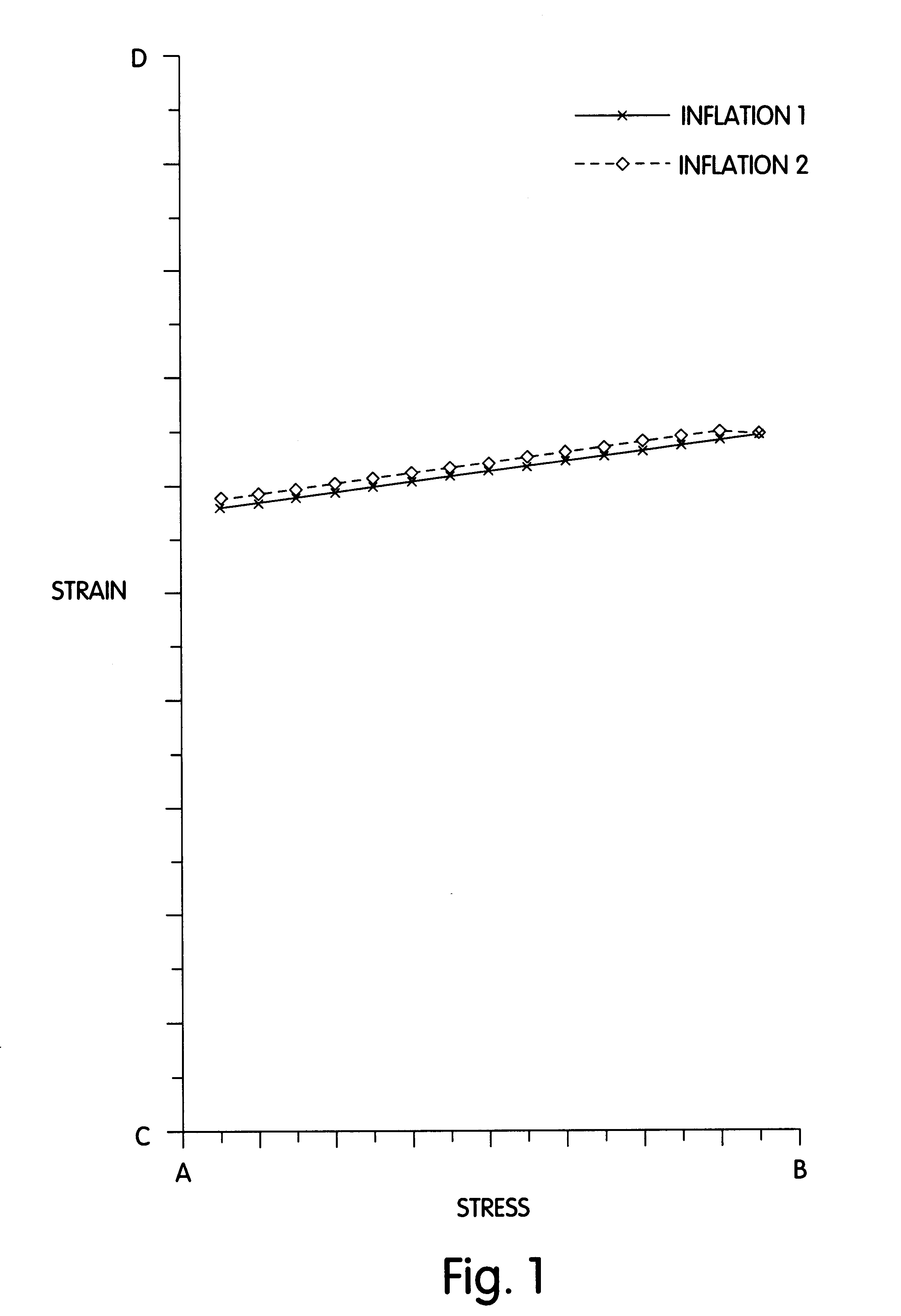Distensible dilatation balloon with elastic stress
a dilatation balloon and elastic stress technology, which is applied in the direction of dilators, catheters, other domestic objects, etc., can solve the problems of stenosis that requires treatment, polymer materials with a relatively low yield point, and follow the original stress-strain curv
- Summary
- Abstract
- Description
- Claims
- Application Information
AI Technical Summary
Benefits of technology
Problems solved by technology
Method used
Image
Examples
example 2
The balloons formed following the process set forth in Example 1 were placed in a sterilization chamber and kept at a temperature of about 40.degree. C..+-.3.degree. C. and a relative humidity of about 55% for about 15 hours. The balloons are kept at a temperature of about 40.degree. C..+-.3.degree. C. and were then treated with 100% ethylene oxide. After being exposed to the ethylene oxide for about 6 hours, the balloons were removed from the sterilization chamber and held at a temperature of about 40.degree. C..+-.3.degree. C. and ambient relative humidity for about 22 hours in order to dissipate the ethylene oxide. At this point, the balloons were sterilized and ready for human use.
example 3
The effect which the novel sterilization process of this invention has on the balloons formed using the balloon forming process contemplated by this invention are demonstrated below. Balloons with a nominal diameter of 3.0 mm were formed from polyurethane following the process described in Example 1. One group of balloons was subjected to the sterilization process contemplated by this invention and described previously in Example 2, sterilization process contemplated by this invention and described previously in Example 2, while the other group of balloons were subjected to a sterilization process currently used in the art.
In that sterilization process (referred to in this Example as "traditional sterilization process"), the balloons were preconditioned at a temperature of about 43.degree. C. and a relative humidity of about 60% for about 24 hours. The balloons were then treated with about 12% ethylene oxide and 88% Freon.TM. at a temperature of about 54.degree. C. After being treat...
example 4
The following example demonstrates the importance of the heat set step. Three dilatation balloons with a nominal or rated diameter of 3.0 mm, were formed from polyurethane following the process described in Example 1. The average burst pressure, distensibility and wall tensile strength of balloons formed using different heat set temperatures are compared. The burst pressure and distensibility were determined at 37.degree. C.
PUM
| Property | Measurement | Unit |
|---|---|---|
| wall tensile strength | aaaaa | aaaaa |
| wall tensile strength | aaaaa | aaaaa |
| yield point | aaaaa | aaaaa |
Abstract
Description
Claims
Application Information
 Login to View More
Login to View More - R&D
- Intellectual Property
- Life Sciences
- Materials
- Tech Scout
- Unparalleled Data Quality
- Higher Quality Content
- 60% Fewer Hallucinations
Browse by: Latest US Patents, China's latest patents, Technical Efficacy Thesaurus, Application Domain, Technology Topic, Popular Technical Reports.
© 2025 PatSnap. All rights reserved.Legal|Privacy policy|Modern Slavery Act Transparency Statement|Sitemap|About US| Contact US: help@patsnap.com



